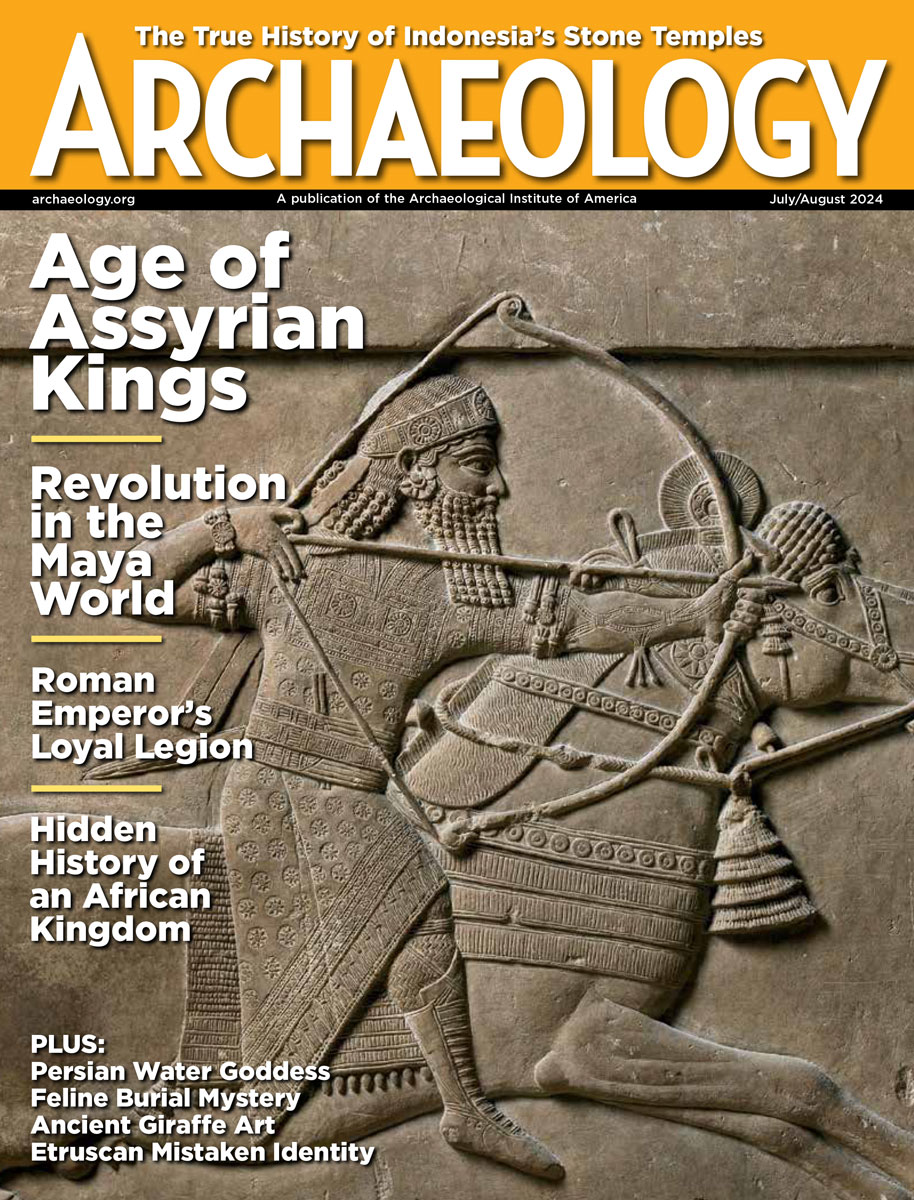Monday, November 24
November 24, 2008
Chinese archaeologists claim to have found one of the 84,000 miniature pagodas commissioned in the second century B.C. by the Indian emperor Ashoka the Great. The pagodas were said to hold relics of Siddhartha Gautama, the Buddha.Â
The case of the golden burial mask of Ka Nefer Nefer heats up as Egypt pursues its return from the St. Louis Art Museum. “This is the No. 1 case,” Zahi Hawass, head of Egypt’s Supreme Council of Antiquities, told the press. The mask was unearthed at Saqqara in 1952 by archaeologist Mohammed Zakaria Ghoneim, and there is no record that it left Egypt legally. The museum purchased the mask in 1998 from an art gallery in Switzerland. Â
More information on the 1,800-year-old Thracian chariot unearthed in a burial mound in Bulgaria is now available. The four-wheeled, bronze-sheathed vehicle was found near wooden and leather objects that may be harnesses, and the remains of horses. This is the second intact chariot to be found in Bulgaria this year.  Â
A new 575-acre park will preserve Civil War battlefields in Northern Virginia. “The historic significance of this site is huge in every way,” said Elizabeth Paradis Stern, assistant director of the Shenandoah Valley Battlefields Foundation. Â
Aerial photographs of Britain suggest that the construction of Hadrian’s Wall in 122 A.D. spurred the local economy, employing farmers, traders, craftsmen, laborers, and prostitutes to support the Roman army. “Some of the local population will have seen the opportunity presented by the occupying forces and gone for it,” said David MacLeod of English Heritage. Â
The Iron Age fortress of Gaer Fawr in heavily wooded central Wales has been recreated digitally. “Our new survey has shown what a very impressive and advanced building it was,” said Royal Commission archaeologist Toby Driver.
- Comments Off on Monday, November 24
Friday, November 21
November 21, 2008
 A Thracian chariot was reportedly unearthed in a burial mound near the Bulgarian village of Karanovo.
A 6,500-year-old Neolithic farming settlement has been found in central Greece during digging for a gas line. “We can’t provide an estimate yet on the settlement’s size, but it doesn’t seem to be very big,” said archaeologist Giorgos Toufexis.Â
DNA taken from bones thought to have belonged to Nicolaus Copernicus has been matched to DNA taken from hairs found in a book owned by the astronomer. “In our opinion, our work led us to the discovery of Copernicus’s remains but a grain of doubt remained,” said Polish archaeologist Jerzy Gassowski.   Here’s a little more background information on Copernicus. Â
An international team of scientists excavating in Sibudu Cave in South Africa have found 70,000-year-old shell beads and other artifacts that could mark the leap to complex human thought.  Â
Businessman Farhad Hakimzadeh will be sentenced today after pleading guilty to 14 charges of theft of pages from rare, historic books in the British Library in London and the Bodleian Library in Oxford. “The violation of the collections transcends mere monetary loss. His victims are the researchers of the future who will not be able to consult this material,” said Kristian Jensen, Head of British and Early Printed Collections at the British Library. Â
U.S. forces are guarding a 1,400-year-old monastery overlooking the city of Mosul. Violence has prevented restoration and excavation, but military chaplains have used the monastery to try to educate the soldiers. “It’s a break for the soldiers and gives Iraq, the people, a human face. It helps them understand the history of the country in which they’re fighting,” said Capt. Geoffrey Bailey. Â
What happens when archaeologists decide to bury a time capsule? Students and staff at the Joukowsky Institute for Archaeology and the Ancient World at Brown University “did it as a ritual,” according to graduate student Krysta Ryzewki.
- Comments Off on Friday, November 21









